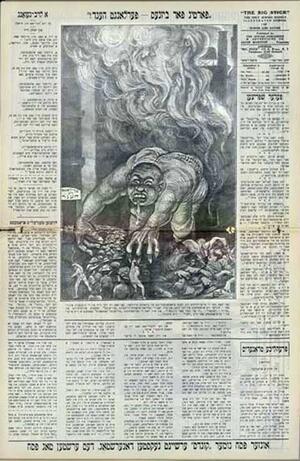Triangle Shirtwaist Factory fire
Approximately 500 workers were making ladies blouses at the Triangle Waist Company's factory near Washington Square in Lower Manhattan when fire broke out on March 25, 1911.
The ten-story building lacked adequate fire escapes, firefighting equipment was unable to reach the top floors, and—most tragically— doors had been locked to prevent unauthorized breaks from work. Some of the workers, unable to reach an exit, jumped from the windows in a futile effort to save themselves. The fire did its work in less than 40 minutes. By the time it was out, 146 died and many more were injured. Most of the dead were recent immigrant Jewish and Italian women between the ages of sixteen and 23.
Just two years before, the Jewish owners of the Triangle Waist Company had been among the targets of the strike known as the "Uprising of the 20,000," which had sought union recognition through the International Ladies Garment Workers Union (ILGWU). Although some firms agreed to settle with their workers, Triangle did not and remained an anti-union shop.
In the wake of the Triangle fire, the Jewish community and women leaders in the labor movement sprang into action. The Women's Trade Union League (WTUL), a cross-class coalition that worked as an ally of the ILGWU, organized a public meeting at the Metropolitan Opera House on April 2. There, Rose Schneiderman, one of the leaders of the 1909 strike, called upon all working people to take action. Three days later, several hundred thousand people turned out for a funeral procession for the seven unidentified victims of the fire.
Under pressure from the ILGWU, the WTUL, and others, New York State established a Committee on Safety in the wake of the fire. In addition, the state legislature set up a Factory Investigating Committee, which drafted legislation designed to increase protection of workers. The recommendations included automatic sprinkler systems and occupancy limits. Over 30 new labor and safety laws were passed in the three years after the fire.
Even as these regulations went into effect, the site of the Triangle fire remained a rallying point for labor organizing. Some survivors, galvanized by their experience, went on to lifetimes of labor activism. Frances Perkins, who witnessed the fire, later became Secretary of Labor under Franklin Roosevelt. She said that the Triangle fire was the beginning of the New Deal. The last survivor of the fire, Rose Rosenfeld Freedman, died in 2001 at age 107.
Sources: Jewish Women in America: An Historical Encyclopedia, pp. 1409-1412; Dave von Drehle, Triangle: The Fire that Changed America (New York, 2003); www.ilr.cornell.edu/trianglefire/; Jacqueline Jones et al., Created Equal (New York, 2003).




I have had a deep interest in the immigrants that worked in the sweatshops in NY, as my grandmother was a Russian immigrant at age 15. She was a piece maker near the Triangle Shirtwaist factory & witnessed the horrific Triangle fire on March 25, 1911. The labor conditions were horrendous, especially for women & the protests paved the way for unions & much needed changes for the textile industry workers who were mostly young immigrant women of Italian, Irish & Russian descent. I am fascinated by Rose Schneiderman’s accomplishments & passion for changing the lives of so many people. I would like to pursue a story about her life & adapt it to a screenplay.
Who can I contact regarding this matter? Thank you.
Belinda Itskowitz@ belitskowitz@aol.com 818 331 8300. LA CA.
This 'story' needs to be told over & over...!